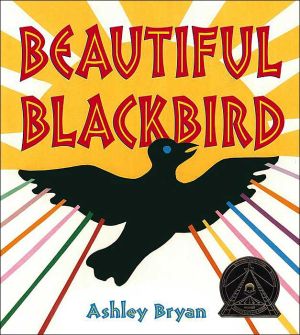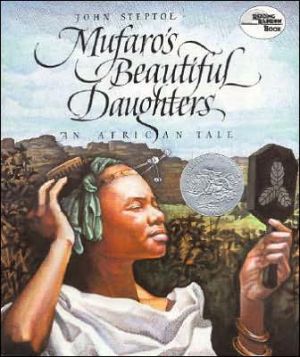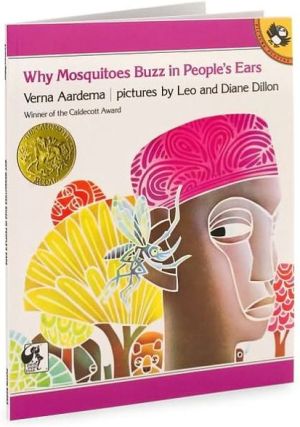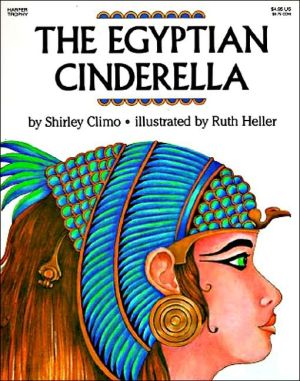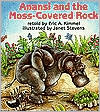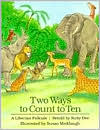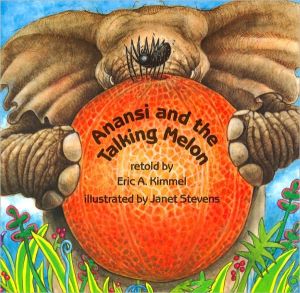Beautiful Blackbird
Black is beautiful, uh-huh! \ Long ago, Blackbird was voted the most beautiful bird in the forest. The other birds, who were colored red, yellow, blue, and green, were so envious that they begged Blackbird to paint their feathers with a touch of black so they could be beautiful too. Although Black-bird warns them that true beauty comes from within, the other birds persist and soon each is given a ring of black around their neck or a dot of black on their wings -- markings that detail birds...
Search in google:
Black is beautiful, uh-huh!Long ago, Blackbird was voted the most beautiful bird in the forest. The other birds, who were colored red, yellow, blue, and green, were so envious that they begged Blackbird to paint their feathers with a touch of black so they could be beautiful too. Although Black-bird warns them that true beauty comes from within, the other birds persist and soon each is given a ring of black around their neck or a dot of black on their wings -- markings that detail birds to this very day.Coretta Scott King Award-winner Ashley Bryan's adaptation of a tale from the Ila-speaking people of Zambia reso-nates both with rhythm and the tale's universal meanings -- appreciating one's heritage and discovering the beauty within. His cut-paper artwork is a joy.Publishers WeeklyStoryteller Bryan's (What a Wonderful World) singular voice provides rhythm and sound effects throughout this musical adaptation of a Zambian tale. When gray Ringdove calls the other monotone birds together and asks, "Who of all is the most beautiful?" they all reply, "Blackbird." They then encircle Blackbird, dancing and singing, "Beak to beak, peck, peck, peck,/ Spread your wings, stretch your neck./ Black is beautiful, uh-huh!/ Black is beautiful, uh-huh!" At the birds' request, Blackbird agrees to paint black markings on them (with the blackening brew in his medicine gourd), but he warns Ringdove that it's not the color black that will make them beautiful. "Color on the outside is not what's on the inside..... Whatever I do/ I'll be me and you'll be you." The message about inner beauty and identity becomes somewhat diluted by the closing song, in which the birds triumphantly sing, "Our colors sport a brand-new look,/ A touch of black was all it took./ Oh beautiful black, uh-huh, uh-huh/ Black is beautiful, UH-HUH!" But if the ending creates a bit of confusion, Bryan's collages make up for it with their exhibition of colorful splendor and composition. Scenes of the rainbow of wings are outdone only by a lakeside view of their colors intricately "mirrored in the waters." And Bryan's lilting and magical language is infectious. Ages 3-7. (Jan.) Copyright 2002 Cahners Business Information.
Black is beautiful, uh-huh!\ \ Long ago, Blackbird was voted the most beautiful bird in the forest. The other birds, who were colored red, yellow, blue, and green, were so envious that they begged Blackbird to paint their feathers with a touch of black so they could be beautiful too. Although Black-bird warns them that true beauty comes from within, the other birds persist and soon each is given a ring of black around their neck or a dot of black on their wings — markings that detail birds to this very day.\ Coretta Scott King Award-winner Ashley Bryan's adaptation of a tale from the Ila-speaking people of Zambia reso-nates both with rhythm and the tale's universal meanings — appreciating one's heritage and discovering the beauty within. His cut-paper artwork is a joy.
\ Publishers WeeklyStoryteller Bryan's (What a Wonderful World) singular voice provides rhythm and sound effects throughout this musical adaptation of a Zambian tale. When gray Ringdove calls the other monotone birds together and asks, "Who of all is the most beautiful?" they all reply, "Blackbird." They then encircle Blackbird, dancing and singing, "Beak to beak, peck, peck, peck,/ Spread your wings, stretch your neck./ Black is beautiful, uh-huh!/ Black is beautiful, uh-huh!" At the birds' request, Blackbird agrees to paint black markings on them (with the blackening brew in his medicine gourd), but he warns Ringdove that it's not the color black that will make them beautiful. "Color on the outside is not what's on the inside..... Whatever I do/ I'll be me and you'll be you." The message about inner beauty and identity becomes somewhat diluted by the closing song, in which the birds triumphantly sing, "Our colors sport a brand-new look,/ A touch of black was all it took./ Oh beautiful black, uh-huh, uh-huh/ Black is beautiful, UH-HUH!" But if the ending creates a bit of confusion, Bryan's collages make up for it with their exhibition of colorful splendor and composition. Scenes of the rainbow of wings are outdone only by a lakeside view of their colors intricately "mirrored in the waters." And Bryan's lilting and magical language is infectious. Ages 3-7. (Jan.) Copyright 2002 Cahners Business Information.\ \ \ \ \ School Library JournalK-Gr 2-Because they haven't got a spot of black on their bodies, the colorful birds of Africa envy Blackbird. They extol his feathers that "gleam all colors in the sun" in their songs and dances. And although he assures them that "Color on the outside is not what's on the inside," he generously shares the blackening brew in his gourd. First he adds a necklace of midnight to Ringdove, then markings of black to every feathered creature large and small, causing them to finally sing, "Oh beautiful black, uh-huh, uh-huh/Black is beautiful, UH-HUH!" Adapted from an Ila tale from Zambia, this story delivers a somewhat contradictory message. Blackbird frequently affirms that it's what's inside that counts but his avian friends are certainly fixated on adding some black to their feathered finery. The story line is simple and the rhythmic chants of the flock frequently interspersed throughout the text add drama and a rapper's cadence. The cut-paper silhouettes are colorful but static, effectuating a stylized formality. The endpapers include an image of the scissors used to create the collages and reinforce the physical process behind the art. This unusual and little-known pourquoi tale may supplement larger collections and serves as a thoughtful and entertaining addition to units on self-esteem.-Carol Ann Wilson, Westfield Memorial Library, NJ Copyright 2003 Cahners Business Information.\ \ \ Kirkus ReviewsBlackbird shares his gifts with the birds of Africa in this colorful read-aloud. This adaptation of an Ila story tells of long ago, when all the birds have solid colored, unpatterned feathers, and only Blackbird has any black at all. The other birds agree that Blackbird is the most beautiful, as his black feathers "gleam all colors in the sun." Blackbird mixes up a little something in his medicine gourd, and presents each bird with some black patterns of its own. The birds are happy with their new designs, and chorus, "Black is beautiful, UH-HUH." This telling, by the master storyteller, just aches to be read aloud; the lively rhythms keep the simple folktale rollicking along. The cut-paper collage illustrations are full of color, but it’s of blandly similar intensity until Blackbird arrives with his blackening brew. Then the newly patterned birds, gleaming in high-contrast images with their new designs, make for visual excitement as they praise Blackbird for their new look. A good start at challenging learned ways of reading color that reserve black for scary or dull images, the text implies a racial metaphor (unless the refrain "black is beautiful" is focused only on rethinking artistic codes), yet whatever message of tolerance or self-love the text might hold is obscure. Blackbird talks of the difference a little black can make, but he also emphasizes that external appearances do not reflect the inner self. Which of the two is more important is never clarified. Still, the rolling language and appealing illustrations make this a must. (Picture book/folktale. 4-7)\ \
